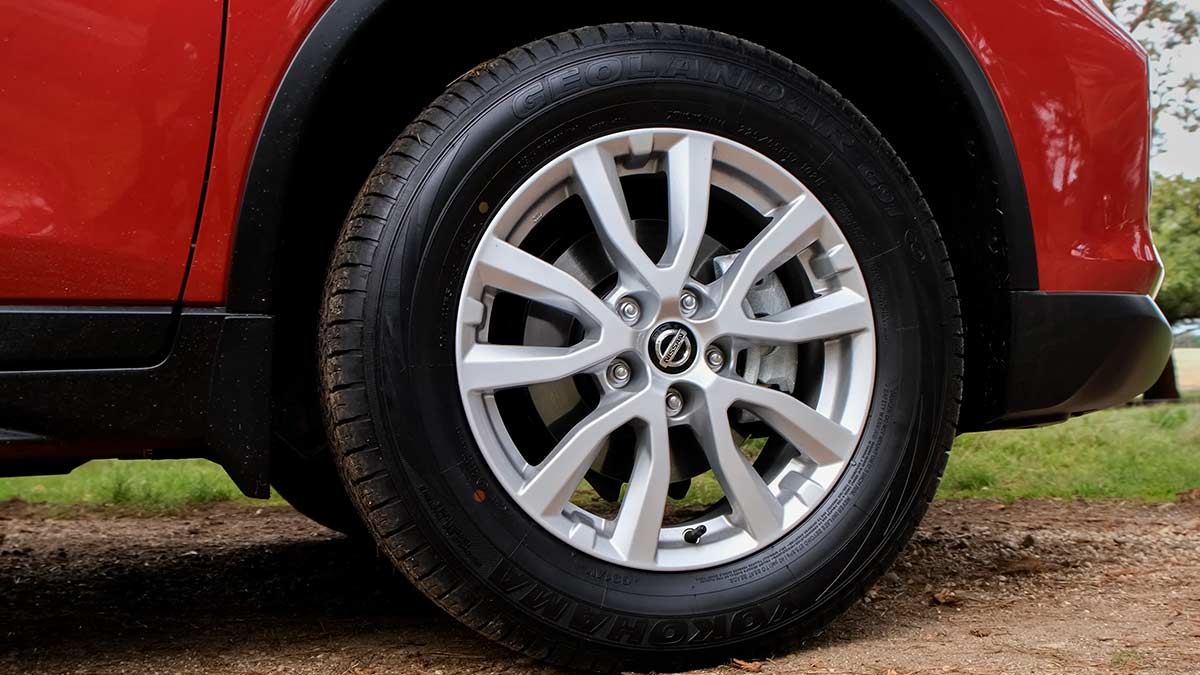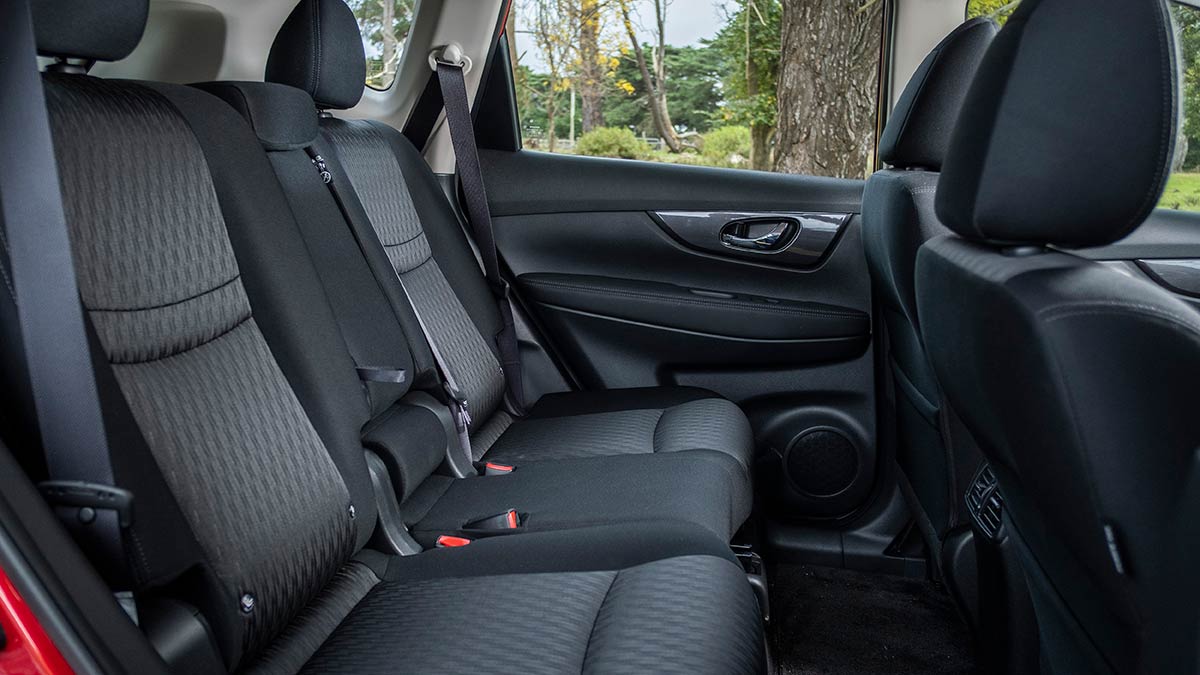The ninth-generation Toyota HiLux has arrived, bringing with it a futuristic forward exterior design, more safety and tech and the same rugged capability owners love. Will the updates tempt private buyers away from the Ford Ranger or are they just enough to keep fleets onside?
Value over vanity: the Nissan X-Trail ST+ is the smart SUV choice in 2022

Just as life is about compromise, as is buying a car. If you’re prepared to sacrifice the latest interior looks and software for a great price, this Nissan X-Trial might be for you.
If you’re in the market for an affordable mid-sized SUV, Nissan has your car. The front-wheel-drive X-Trail ST+ is solid value, providing you’re prepared to overlook its age.
Potential owners need, however, to recognise there’s a new model due later in 2022 that will shift the game in terms of looks, creature comforts, and styling.
The adage 'you get what you pay for' has never been more true, with the ST+ variant packed with most of the gear you want at a price most rivals can’t match.
It is far from the latest-and-greatest, particularly when it comes to the latest safety software, but the X-Trail represents real value in the most competitive segment in the country.
That makes it appealing to buyers on a budget, rather than those who are looking for the most stylish and sophisticated cars in the market.
A proven drivetrain, good construction and usable space means the X-Trail still stacks up.
On this page
- How much does the Nissan X-Trail ST+ cost?
- Is the Nissan X-Trail ST+ safe?
- What's the Nissan X-Trail ST+ like inside?
- What's under Nissan X-Trail ST+'s bonnet?
- Is the Nissan X-Trail ST+ efficient?
- How does the Nissan X-Trail ST+ drive?
- Should I buy one?
How much does the Nissan X-Trail cost?
Nissan has tactically acknowledged this version of the X-Trail is on its last legs and has priced the SUV accordingly.
The ST+ we tested in front-wheel-drive guise costs around $38,000 on the road. An all-wheel-drive version adds $2000.
That’s a long way in front of rival vehicles, given Nissan has infused a fair bit of tech into what is essentially a base model vehicle.
You can buy a more modern Mazda CX-5 Maxx for similar money, but it comes with a manual transmission and fewer features. Similarly, the Toyota RAV4 GX, while equipped with an automatic transmission, costs $40,000 before on-roads.
That puts the Nissan in the box seat in terms of price and, along with the fact you can actually put one in your driveway without a six-month wait, makes the X-Trail a smart choice.
Pay for an up-front servicing plan and the X-Trail will cost $1,642 over the course of five years, which corresponds to the warranty period.
Is the Nissan X-Trail safe?
A five-star safety rating was bestowed upon the Nissan X-Trail in 2017, when the model was updated with autonomous emergency braking.
The rating applies to all versions except those fitted with the 2.0-litre diesel engine. ANCAP also noted that third-row occupants don’t have access to airbags or seat belt reminders.
The X-Trail earned 14.68 out of 16 points in the frontal offset test, full marks in the side impact and pole tests, and was judged to offer “acceptable” pedestrian protection.
Six airbags are standard and the ST+ is fitted with a surround-view camera and front and rear parking sensors.
What is the Nissan X-Trail like inside?
Dated but durable is an apt description for the X-Trail. Smartphones now have bigger screens than the Nissan’s infotainment display and there’s an old-school foot-operated parking brake mechanism in the footwell.
Likewise, some plastics lack the tactility of newer rivals, despite the mid-life update adding soft-touch surfaces in the most visible areas. On a positive note, the surfaces are durable and easy to clean, which is always a consideration for parents.
Age hasn’t diminished the interior space, up front or in the back. The X-Trail still has impressive cabin storage supportive seats.
The rear seat room is a highlight, with the slightly elevated second row ensuring occupants have a good view outside the vehicle.
That utility is also evident with a generous 565 litres of cargo capacity.
The boot floor is a two-piece unit with the smaller panel covering a tray owners can use to keep valuables out of sight when parked. It can also be flipped upright to stop groceries sliding around when coming home from the shops.
What’s under the Nissan X-Trail’s bonnet?
A naturally aspirated 2.5-litre four-cylinder petrol engine powers the ST+ and is good for 126kW (ignore the video, my bad) and 233Nm.
Those are reasonable numbers in terms of entry mid-sized SUVs and comparable to the CX-5 and RAV4. The issue is that is the best petrol engine available (the entry X-Trail ST has a lethargic 2.0-litre engine), where many rivals have a turbocharged engine in higher spec variants. Bring on the new model.
Power is transferred to the wheels by a continuously variable transmission that is well suited to the role of a modest family runabout. I’d still take a torque-converter or dual-clutch automatic, though that would add to the cost of the car (they’re more expensive to build).
Is the Nissan X-Trail efficient?
A claimed combined fuel use of 7.9 litres/100km balloons to 10.9 litres/100km in urban driving.
That’s respectable for a mid-sized SUV with an internal combustion engine, without coming near the class-leading Toyota RAV4 in hybrid guise, where fuel consumption is as low as 4.8-litres/100km around town.
Most buyers will come close to matching Nissan’s fuel figures. The RACV saw 9.2 litres/100km in a near-equal mix of city and freeway driving. The tank is a decent 60 litres and the X-Trail runs on regular 91 RON petrol.
How does the Nissan X-Trail drive?
Buyers of mid-sized SUVs tend not to base their purchase decision on how well the vehicle can carve up country back roads.
It is all about comfort and not bouncing around the kids, or adults, in the back to the point where cleaning the upholstery (and potentially the floor and windows) looks likely.
The X-Trail fills that brief well.
There’s no undue bouncing as the Nissan rolls over potholes and overall compliance is what most owners will expect in this class of car. The large tyre sidewalls (65mm) also absorb the smaller ripples and road joins to smooth out the low-speed ride.
The downside of that softish suspension is the fact the X-Trail will lean a little when negotiating bends. If you’re after a more dynamic drive, try the Mazda CX-5 or Kia Sportage.
The X-Trail steers where it is pointed with a bland inoffensiveness that parents will appreciate. There’s enough initial play in the wheel that small movements, like those that occur when head-checking what the children are up to, doesn’t translate into trying to swap lanes.
While it’s no powerhouse, the X-Trail will happily keep pace with the traffic around town or when accelerating for a freeway overtake.
Should I buy one?
The price makes the X-Trail ST+ hard to go past for cash-conscious buyers, despite the fact it is about to be superseded.
If you’re prepared to do without the likes of lane-keep assist and blind-spot alerts, consider waiting another couple of months until Nissan starts promoting its shiny new X-Trail.
At that point, discuss with the dealer about how big a discount you can get on the model that is about to be relegated from the showroom floor to the warehouse stockpile.
The information provided is general advice only. Before making any decisions please consider your own circumstances and the Product Disclosure Statement and Target Market Determinations. For copies, visit racv.com.au. As distributor, RACV Insurance Services Pty Ltd AFS Licence No. 230039 receives commission for each policy sold or renewed. Product(s) issued by Insurance Manufacturers of Australia ABN 93 004 208 084 AFS Licence No. 227678.








